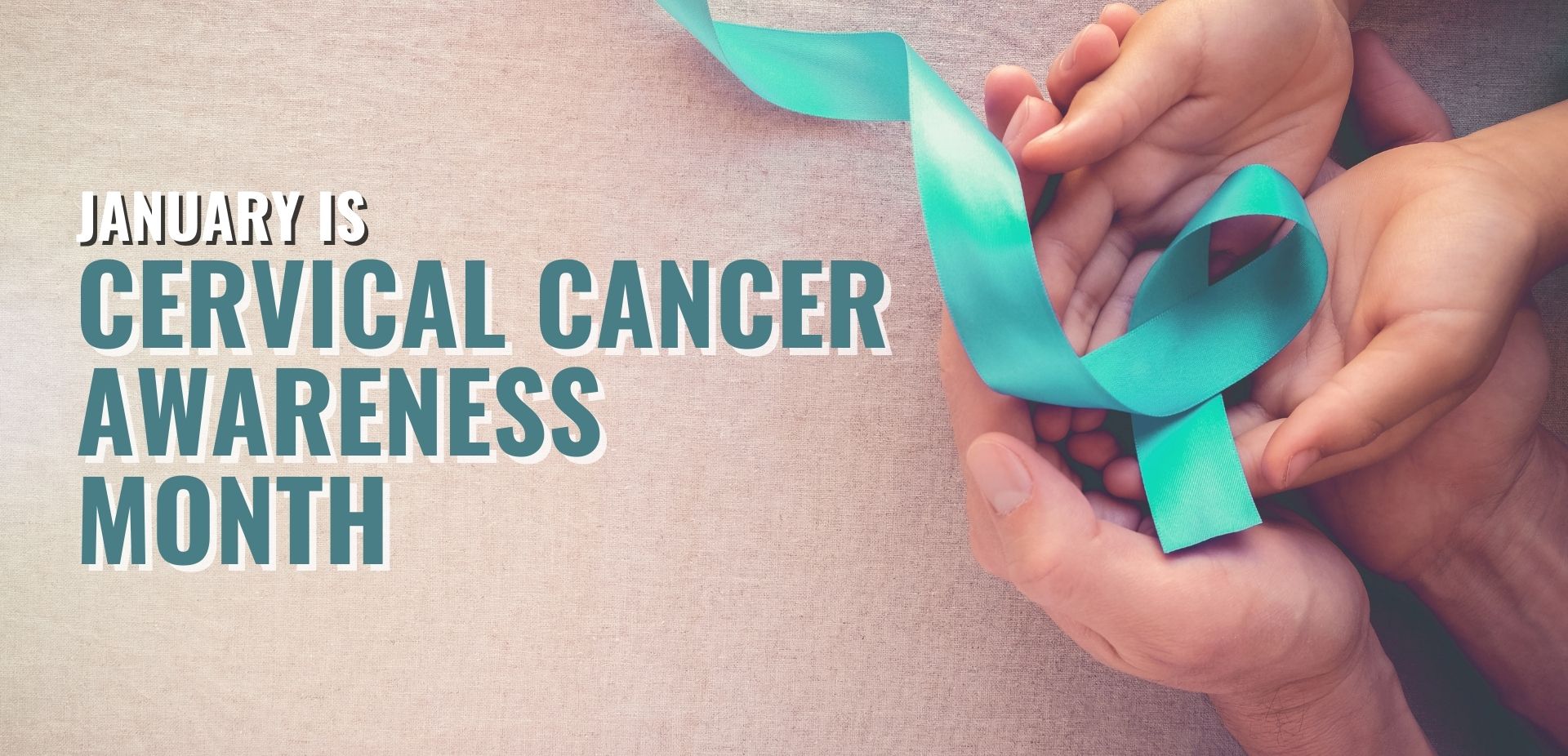January is Cervical Cancer Awareness Month

Do you know how to protect yourself from cervical cancer?
January is Cervical Cancer Awareness Month. During this month, health providers focus on ensuring people with cervixes understand the unique risks posed by cervical cancer. Cervical cancer used to be the leading cause of cancer death for people with cervixes in the United States. However, in the past 40 years, the number of cases of cervical cancer and the number of deaths from cervical cancer have decreased significantly. According to the National Institutes of Health, this decline largely is the result of many people with cervixes getting regular Pap tests (also known as Pap smears), which can find cervical precancer before it turns into cancer.
What is cervical cancer?
According to the Center for Disease Control and Prevention, cancer is a disease in which cells in the body grow out of control. Cancer is always named for the part of the body where it starts, even if it spreads to other body parts later. When cancer starts in the cervix, it is called cervical cancer. The cervix is the lower, narrow end of the uterus. The cervix connects the vagina (the birth canal) to the upper part of the uterus. The uterus (or womb) is where a baby grows when a woman is pregnant. Cervical cancer is the easiest gynecologic cancer to prevent with regular screening tests and follow-up. It also is highly curable when found and treated early.
What can I do to reduce my risk of cervical cancer?
Screening Tests
There are two tests that can either help prevent cervical cancer or find it early:
- The Pap test (or Pap smear) looks for precancers, cell changes, on the cervix that can be treated, so that cervical cancer is prevented. The Pap test also can find cervical cancer early, when treatment is most effective. The Pap test is recommended for women aged 21-65 years old. The Pap test only screens for cervical cancer. It does not screen for any other gynecologic cancer.
- The HPV test looks for HPV— the virus that can cause precancerous cell changes and cervical cancer.
HPV Vaccine
The HPV vaccine protects against the types of Human Papilloma Virus (HPV) that most often cause cervical, vaginal, and vulvar cancers. The HPV vaccine is recommended for boys and girls who are 11 to 12 years old but can be given as early as age 9 and until age 26.
HPV vaccination prevents new HPV infections, but does not treat existing infections or diseases. This is why the HPV vaccine works best when given before any exposure to HPV. You should get screened for cervical cancer regularly, even if you received an HPV vaccine.
More Steps to Help Prevent Cervical Cancer
These things may also help lower your risk for cervical cancer, according to the CDC—
- Don’t smoke.
- Use condoms during sex.*
- Limit your number of sexual partners.
*HPV infection can occur in both male and female genital areas that are covered or protected by a latex condom, as well as in areas that are not covered. While the effect of condoms in preventing HPV infection is unknown, condom use has been associated with a lower rate of cervical cancer.
Knowledge is Power: Cervical Cancer
This short animated video from the Centers for Disease Control and Prevention (CDC) reminds women that getting screened for cervical cancer helps prevent the disease.


